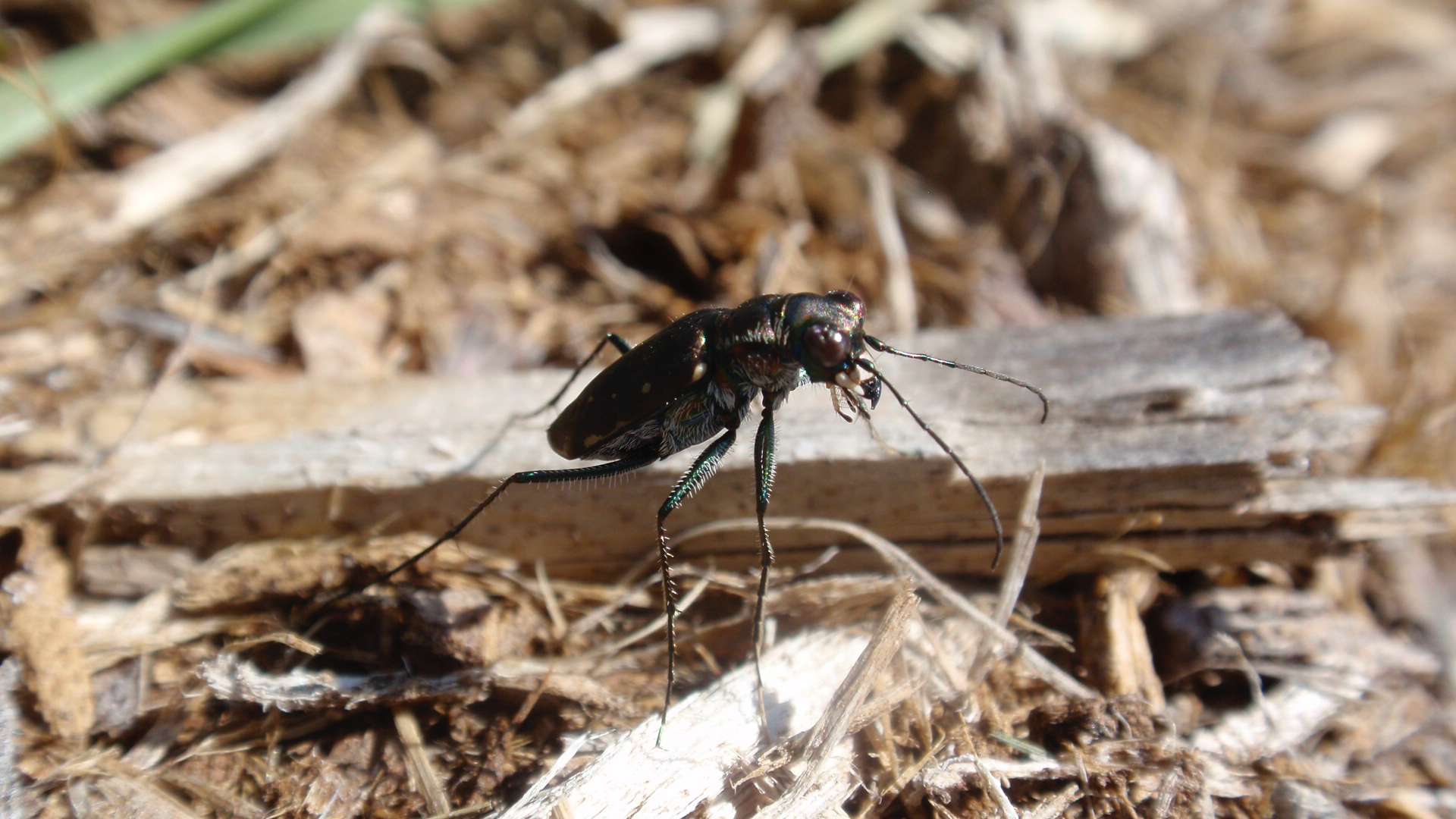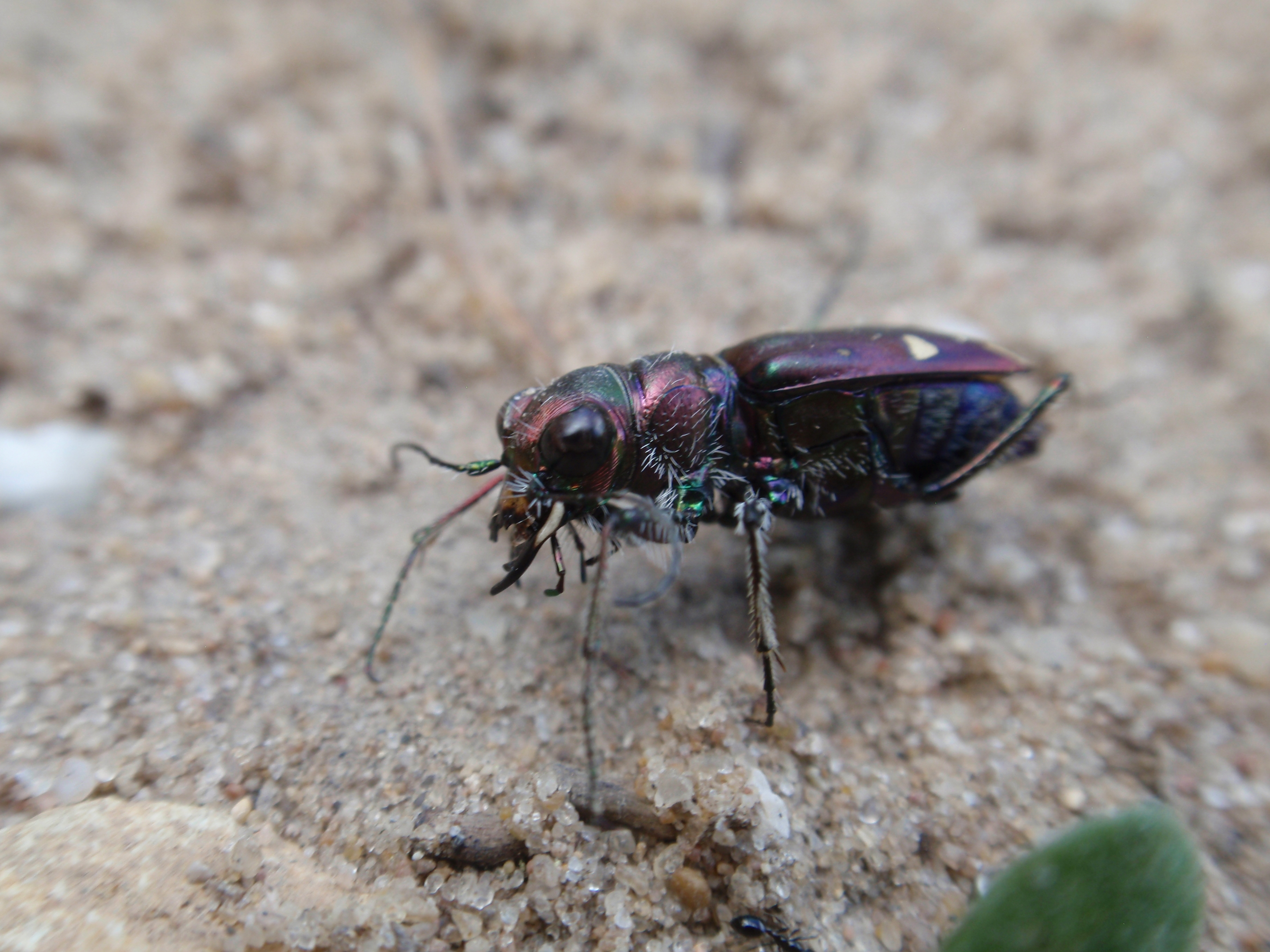Michigan insects in the garden - Season 2 Week 3: Cicindelinae
Tiger beetles are predators with fierce jaws and eyes on the back of their heads.

If you’ve ever walked the beaches or sand dunes of Michigan, you have probably had this experience: A dazzling metallic green insect comes into view and just before you are able to focus your eyes on it, it flies another 5 or 6 feet away and looks back at you tauntingly (Photo 1). These insects are tiger beetles in the insect order Coleoptera and the subfamily Cicindelinae. Entomologists disagree over whether they belong in the family Carabidae (the ground beetles) or should be given their own family name (Cicindelidae), but most entomologists agree they are extremely challenging to catch. Tiger beetles’ large bulbous eyes give them the ability to see approaching predators, and their wings and long legs give them the option of escaping by land or air.
Tiger beetles don’t get their name because they are good at running away. Their long legs, large eyes and sickle-like jaws (Photo 2) make them very effective predators of other insects. At 1-2 centimeters (0.3-0.75 inches) long, tiger beetles are able to subdue a variety of insects such as caterpillars, ants and flies. Tiger beetles don’t actively search out prey. Instead, they usually wait in an open area and pounce on prey that might wander by.

There are about 110 species of tiger beetles in North America and the adults come in a variety of colors, from the more common green to iridescent purple (Photo 3), black or a more drab tan to brown. Although they may be most commonly associated with beaches and dunes, they can be found in almost all of the habitats that Michigan has to offer, including forests, agricultural fields and residential yards.

The life cycle of a tiger beetle
Tiger beetles, like all beetles, undergo a dramatic change in their lives as they transition from immaturity to adulthood (metamorphosis). Adult female tiger beetles lay eggs in the soil, usually near their sandy hunting grounds. These eggs will overwinter underground and hatch as the soils begin to warm in the spring. The larval tiger beetle that hatches from the egg is a bizarre worm-like creature that you are not likely to see unless you dig it from its underground burrow (Photo 4).

Like the adults, immature tiger beetles do not actively search for prey. They sit in a burrow with their head plugging the entrance like a trap door (Photo 5). When it detects a potential prey insect nearby, the larva will rapidly eject the top half of its body from the hole, jaws outstretched. In the same movement, the larva will grasp and subdue the prey before retracting its body back into the burrow to safely consume the victim. Tiger beetle larvae remain in the burrow to complete their pupal life stage and metamorphose into adults.

Do tiger beetles hold down pest insect populations?
Although tiger beetles are widely regarded as voracious predators, there has been relatively little study of their impact on pest control in agriculture. One study identifies them as a dominant member of the predator community in commercial cotton fields. It is noteworthy that many members of the beetle family that they belong to, the Carabidae, are considered important contributors to pest management, which has been repeatedly supported by research from Michigan State University Extension and elsewhere in the world.
If you are lucky enough to see tiger beetles hunting in your yard or garden, you can encourage them to stay by reducing insecticide applications, especially soil applied insecticides in areas where larvae may be present, and reducing tillage and other soil disturbances.



 Print
Print Email
Email





